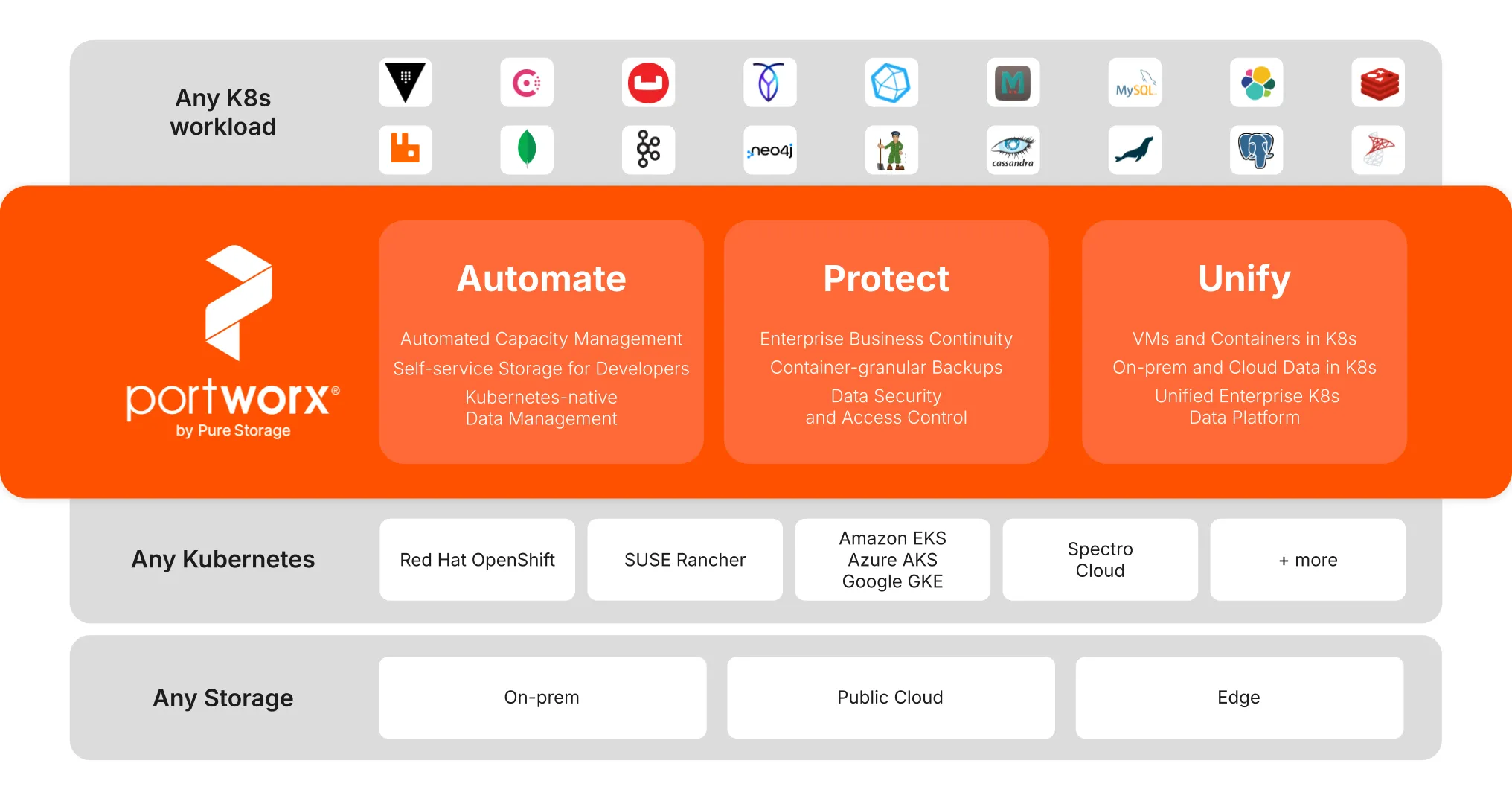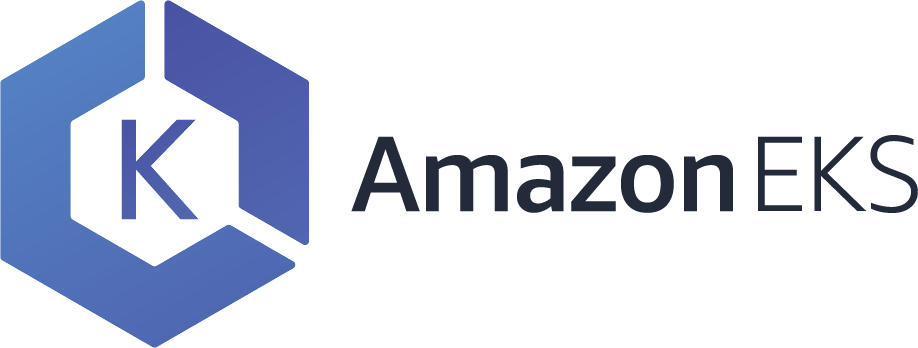Select
The Portworx Platform

Using Portworx can help you
Accelerate Time to Revenue
Automate storage processes and reduce friction throughout the software development lifecycle
Architect Data Resiliency
Enterprise business continuity, performance, and scale for cloud-native applications
Achieve Data Agility
Manage data on Kubernetes across complex environments with a unified operating model
Portworx Capabilities
Enterprise
Storage with elastic scalability, self-service, automated operations, and industry-leading availability
- Automatic storage balancing, scaling, and resizing across on-prem and public clouds
- Intelligent, granular volume placement
- Easy migration between clusters
- Performance and application I/IO tuning
- Enterprise security and controls
Backup
Application-aware, container-granular Kubernetes data protection
- Backup anywhere with single-click restore
- Granular control of container objects and volumes
- Centralized view and timeline across clusters
Disaster Recovery
Flexible data protection policies with low RTO and up to zero RPO
- Asynchronous or synchronous replication between clusters
- Recover data, application, and system configurations
- Up to zero RPO for mission-critical apps
Ecosystem & Integrations
Storage






Kubernetes








Databases







Top Resources




